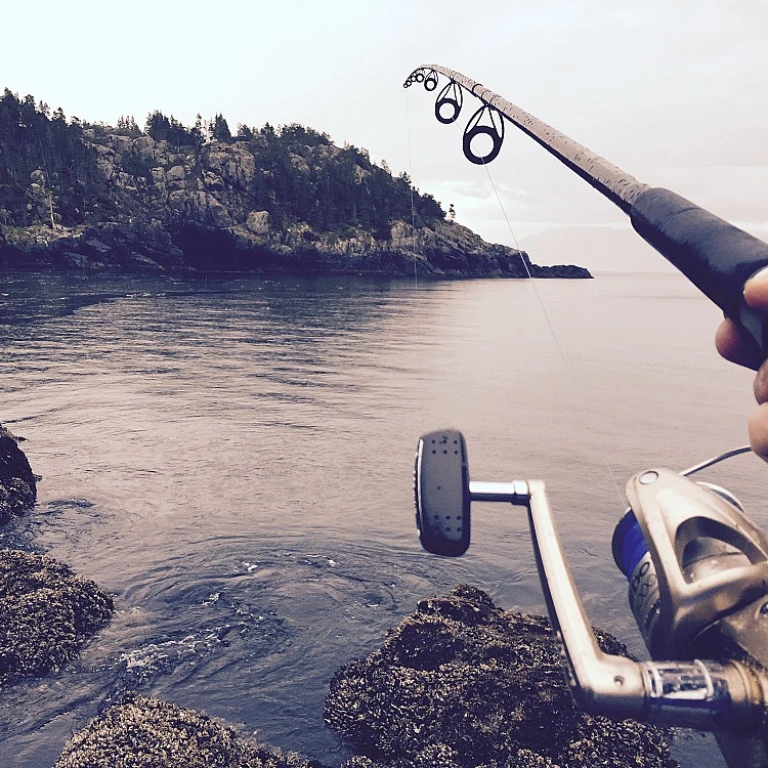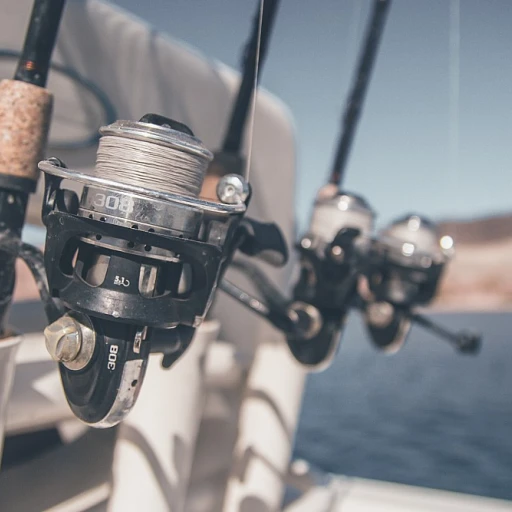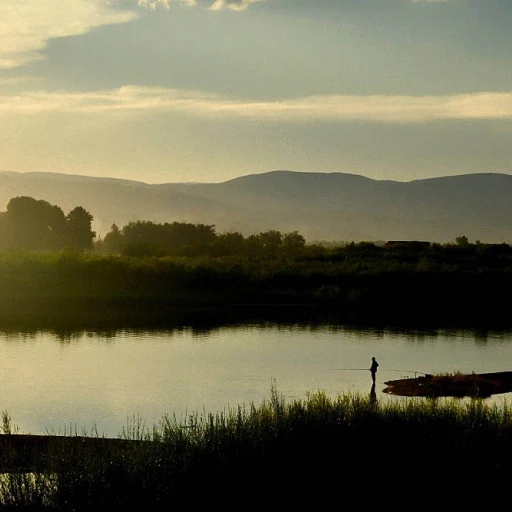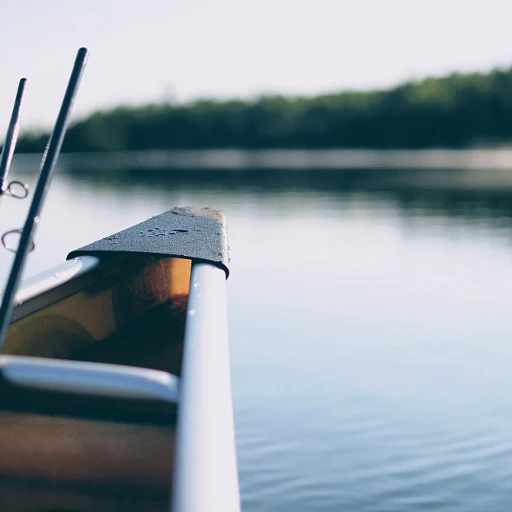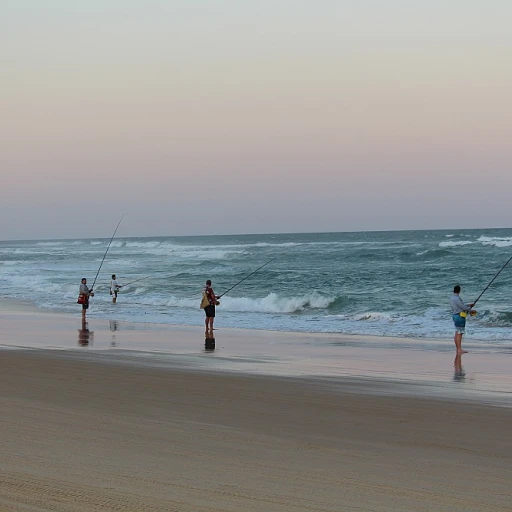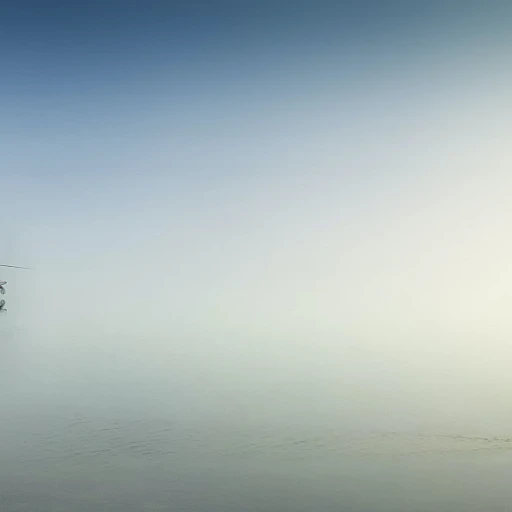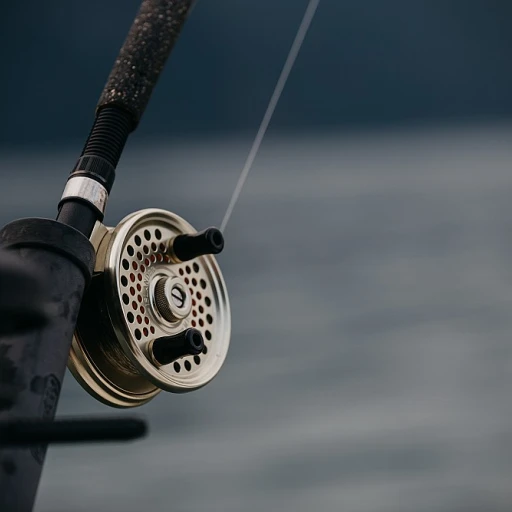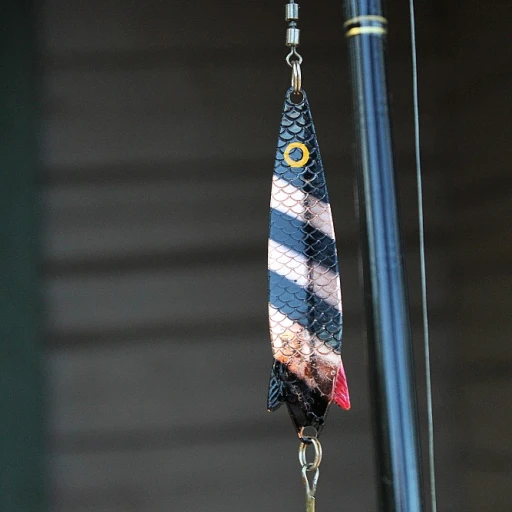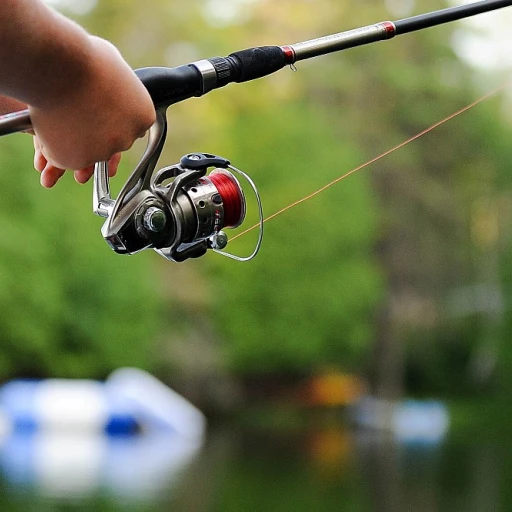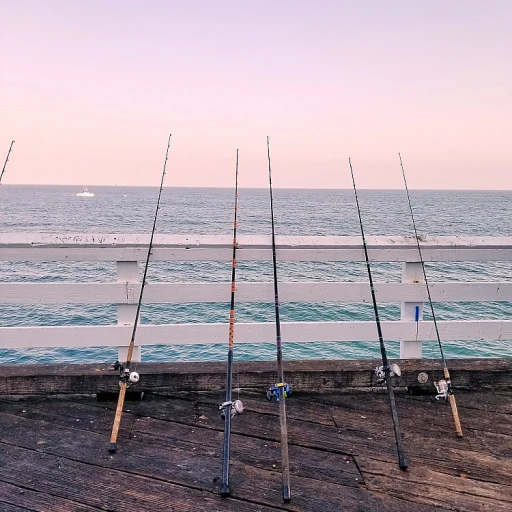Understanding the best time to fish today near me
Unlocking the Perfect Fishing Moment
For many anglers, determining the best fishing times is crucial to having a successful day on the water. Whether you're targeting largemouth bass or bluegill redear, understanding the dynamics of fishing times can significantly enhance your catch rate. Factors such as water temperature, moon phases, and seasonal trends play pivotal roles in influencing when fish are most active.
Fishing during the right times of the day can make a noticeable difference. Early mornings and late afternoons, around sunrise and sunset, are often considered prime times. During these periods, fish tend to be more active, increasing your chances of a good catch. However, the best time can vary depending on the species and the specific conditions of your local lake or river.
Utilizing real-time fishing forecasts and reports can provide valuable insights into the current fishing conditions. These reports often include information on water temperature, weather patterns, and recent catch data, helping you plan your fishing trip more effectively. Additionally, keeping an eye on the fishing calendar can help you anticipate peak fishing times throughout the year.
By understanding these elements, you can optimize your fishing strategy, whether you're aiming for white bass in the United States or catfish during the high activity periods of August. Stay informed and adjust your plans according to the latest fishing forecast and bite times to ensure a rewarding fishing experience.
How weather affects fishing times
Weather Patterns and Their Influence on Fishing
Understanding how weather affects fishing times can significantly enhance your chances of a successful catch. The weather plays a crucial role in determining fish behavior, and knowing what to expect can help you plan your fishing day more effectively. Different weather conditions can either make fish more active or drive them into hiding, affecting your ability to catch them.
One of the primary factors is atmospheric pressure. A falling barometer, often associated with incoming storms, can lead to a feeding frenzy among fish like bass and catfish. Conversely, high-pressure systems, typically marked by clear skies, might cause fish to become lethargic, making it harder to get a bite.
Wind direction and speed also play a part. A light breeze can stir up the water, making fish more active and willing to bite. However, strong winds can make it challenging to keep your line in the water and maintain control of your boat or position on the shore.
Cloud cover is another element to consider. Overcast days can be good for fishing because they provide a sense of security for fish, encouraging them to venture out of their hiding spots. On sunny days, fish might seek shade or deeper water, making them harder to locate.
Temperature changes can also impact fish behavior. Sudden drops or rises in temperature can disrupt feeding patterns. Fish tend to be more active when water temperatures are stable, which is why checking a fishing forecast before heading out can be beneficial.
Incorporating weather reports into your fishing strategy can lead to more productive outings. Keep an eye on the forecast and adjust your plans accordingly to maximize your chances of a good catch.
The role of water temperature in fishing
Why Water Temperature Matters
Water temperature plays a pivotal role in determining the best fishing times. Fish are cold-blooded creatures, meaning their activity levels are directly influenced by the temperature of the water they inhabit. When the water is too cold or too hot, fish become lethargic, reducing their likelihood to bite. Understanding this can help you plan your day fishing more effectively.
Optimal Temperatures for Different Species
Different fish species have varying temperature preferences. For instance, largemouth bass thrive in water temperatures ranging from 60°F to 75°F. In contrast, catfish are more active in slightly warmer waters, around 70°F to 85°F. Knowing these preferences can significantly increase your chances of a good catch.
Seasonal Temperature Changes
As the seasons change, so does the average water temperature. During the summer, lakes and rivers in the United States can reach high temperatures, affecting fish behavior. In August, for example, the water might be warmer, pushing fish to deeper, cooler areas. This is why checking a weekly fishing report or a fishing forecast can be beneficial. These reports often provide insights into current water temperatures and how they might affect fishing conditions.
Utilizing Technology for Better Fishing
Modern technology offers tools that can help you monitor water temperatures in real-time. Devices like fish finders can provide temperature readings, helping you adjust your strategy accordingly. For those interested in portable fishing options, exploring micro skiffs can offer flexibility in navigating different fishing spots.
By understanding how water temperature affects fish behavior, you can enhance your fishing experience, whether you’re targeting bluegill redear, white bass, or any other species. With the right knowledge and tools, every fishing trip can be a successful one.
Moon phases and their impact on fishing
Moon Phases: A Natural Fishing Calendar
Understanding the moon phases can significantly impact your fishing success. Many anglers believe that the moon's position affects fish behavior, influencing their feeding times. During certain phases, fish like bass and catfish become more active, making it a good time to fish.
The quarter moon phases, both first and last, are often considered optimal for fishing. During these times, the gravitational pull of the moon affects the tides, which in turn influences fish activity. This is especially true in lakes and rivers where changes in water movement can trigger feeding frenzies.
It's not just about the moon phase itself, but also the time of day when the moon is overhead or underfoot. These are known as major and minor bite times. Aligning your fishing trips with these times can increase your chances of a successful catch, whether you're after largemouth bass or bluegill redear.
While the moon phase provides a natural guide, don't forget to consider other factors like weather conditions and water temperature, which also play crucial roles in determining the best fishing times. For a comprehensive approach, consult a fishing forecast or a weekly fishing report to plan your trip.
Incorporating moon phases into your fishing strategy can transform an average day into a successful outing. So, next time you're planning a day fishing trip, check the lunar calendar and prepare to reel in the big ones!
Seasonal fishing trends and tips
Seasonal Shifts and Fishing Success
Understanding the seasonal trends in fishing can significantly improve your chances of a good catch. Each season brings its own set of challenges and opportunities, influencing everything from water temperature to fish behavior. Recognizing these patterns will guide you in planning your fishing trips more effectively.
During the spring, as water temperatures begin to rise, fish like largemouth bass and bluegill redear become more active, making it an excellent time for anglers. The longer days and increasing water temperatures stimulate feeding activities, providing more opportunities for a successful catch.
In the summer months, early morning and late evening are often the best fishing times. The high temperatures during midday can drive fish to deeper, cooler waters. A weekly fishing report can help you identify the best fishing spots and times, especially for species like catfish and white bass, which are more active during these cooler periods.
Fall brings another shift as fish prepare for the colder months ahead. The cooling water temperatures can trigger a feeding frenzy, making it a prime time for bass fishing. Pay attention to the fishing calendar and bite times, as these can vary significantly with the changing seasons.
Winter fishing requires a different approach. Fish are less active, and their metabolism slows down, so patience is key. However, with the right techniques and a good fishing forecast, you can still enjoy a productive day fishing, especially in lakes where species like trout remain active.
By aligning your fishing efforts with these seasonal trends, you can enhance your fishing experience and increase your chances of a successful outing. Remember, the best fishing times are often dictated by these natural rhythms, so staying informed through fishing reports and forecasts is essential.
Real-time fishing forecasts and reports
Leveraging Real-Time Data for Fishing Success
In today's digital age, real-time fishing forecasts and reports have become indispensable tools for anglers. Whether you're targeting bass, catfish, or bluegill redear, having access to up-to-date information can significantly enhance your fishing experience. These resources provide insights into the best fishing times, water temperature, and even specific bite times for various species.
Fishing forecasts often include detailed reports on the current conditions of lakes and rivers across the United States. These reports can highlight changes in water temperature, which play a crucial role in determining fish activity levels. For instance, largemouth bass and white bass are more likely to bite when the water temperature is optimal. By consulting these forecasts, you can plan your day fishing trips around the most favorable conditions.
Moreover, fishing reports are updated regularly, sometimes even hours ago, offering a snapshot of the current fishing landscape. This can be particularly useful during transitional periods like sunrise and sunset, when fish are typically more active. Additionally, some platforms provide a fishing calendar, outlining the average day conditions and the best fishing opportunities throughout the month.
For those who prefer a more interactive approach, social media platforms like Facebook and Twitter often host communities where anglers share their experiences and tips. These platforms can be a treasure trove of information, offering firsthand accounts and advice from fellow fishing enthusiasts.
Incorporating real-time data into your fishing strategy not only increases your chances of a successful catch but also enhances your overall experience. Whether you're a seasoned pro or a weekend warrior, staying informed with the latest fishing forecast and reports is a surefire way to make the most of your time on the water.
Expert tips for the best fishing experience
Enhancing Your Fishing Experience with Expert Tips
Fishing is not just about casting your line and waiting; it’s about understanding the environment and making informed decisions. Here are some expert tips to ensure you have the best fishing experience possible:
- Leverage Weather Conditions: Keep an eye on the weather forecast before heading out. Cloudy days often provide the best fishing times, as fish are more likely to come to the surface. A sudden drop in temperature can also trigger feeding, making it a good time to catch bass or catfish.
- Monitor Water Temperature: As discussed earlier, water temperature plays a significant role in fish activity. In the heat of August, fish tend to stay in cooler, deeper waters. During the early morning or late afternoon, when the water is cooler, you might have better luck catching largemouth bass or bluegill redear.
- Understand Moon Phases: The moon has a mysterious yet profound effect on fishing. During a quarter moon, for example, fish are known to be more active. Aligning your fishing calendar with these phases can increase your chances of a successful catch.
- Seasonal Trends: Each season brings its own set of challenges and opportunities. In the United States, summer might be great for bass fishing, while fall could be ideal for catching white bass. Adjust your strategy based on seasonal fishing reports and trends.
- Utilize Real-Time Reports: Checking a weekly fishing report or a real-time fishing forecast can provide insights into current bite times and the best fishing spots. Many anglers share their experiences on platforms like Facebook and Twitter, which can be valuable resources.
By integrating these expert tips with real-time data and understanding the natural environment, your day fishing can transform from average to extraordinary. Remember, patience and adaptability are key to a successful fishing trip.
Case studies: Successful fishing trips
Success Stories from the Water
Understanding the best time to fish is crucial, but nothing beats hearing about real-life experiences. Here, we dive into some successful fishing trips that highlight how timing, weather, and water conditions can make a significant difference.
One angler shared their experience of a day fishing trip on a local lake during the quarter moon phase. They noted how the fishing forecast predicted optimal bite times just after sunrise. Armed with this information, they managed to catch several largemouth bass, attributing their success to the high water temperature and the moon phase's influence.
Another report comes from a weekly fishing group that targets catfish and bluegill redear. They planned their outing based on the fishing calendar and a fishing report that suggested good conditions in the late afternoon. The group experienced an above-average day, catching more than their usual haul, thanks to favorable weather conditions and a detailed fishing report.
In the United States, a bass fishing enthusiast recounted their trip in early August. They meticulously checked the fishing times and forecast, choosing a day when the water temperature was just right. Their preparation paid off, as they landed several white bass, making it one of their best fishing days that month.
These case studies illustrate that with the right preparation and understanding of fishing times, anyone can have a successful trip. Whether you're targeting largemouth bass or catfish, knowing the best fishing conditions will always give you an edge. For more insights, check out our fishing times guide.

